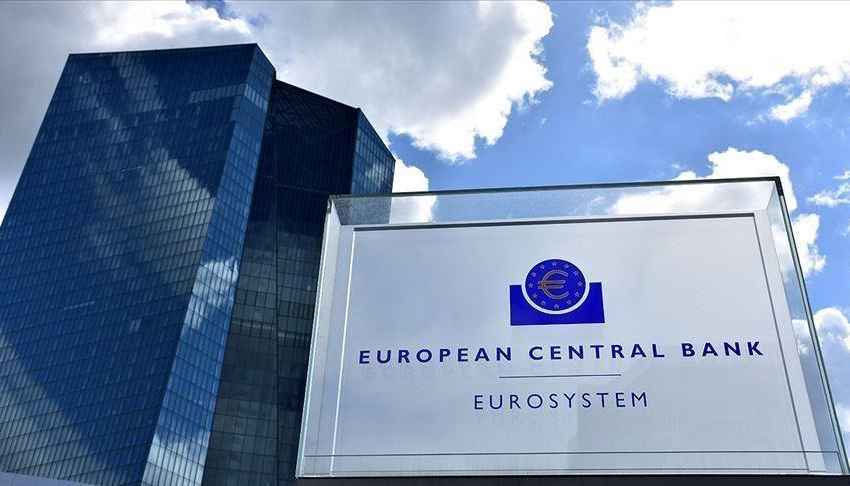
The European Central Bank (ECB) whose role is to maintain euro price stability within the Eurozone and lead European economic and monetary policy, decided to raise its interest rates from 0% to 0,5%, first since 2011, and its deposit rate, applied to cash whose banks don’t distribute as a credit, from -0,5% to 0%. Therefore, the era of negative rates is over, which was initiated in 2014 to launch economic recovery after 2011-2012 debt crisis. This decision was recently taken after the dismissal of Italian Prime Minister Mario Draghi. An economic crisis in Italy is feared by the European observers.
The Ukraine war has indirectly led to a considerable increase of energy price. Therefore, Christine Lagarde, head of the ECB, argued “that inflation price index reached 8,6% in June, within the Eurozone and will remain as undesirable high for some time”. In this context, she justified such ECB decision. (Charrel, 2022)
Are the EU about to face another disagreement amongst its member states due to this new economic instability with highly increasing inflation whereas an economic recovery took place as of 2016 to tackle 2007-2014 debt crisis? Highlighting unfavorable circumstances that took place these last few years to European countries to ensure a positive economic performance, even though the EU is the 3rd economic strength worldwide in terms of GDP after China and the US (Economics, 2022), Covid-19 period, when governments had to achieve high amounts of loans to contain this pandemic, Brexit enactment, and Ukraine war have impacted European economy situation. Consequently, Euro exchange rate decreased to be equivalent to Dollar rate (USD), which is a first since 2002 Euro’s issuance and an alarm bell to EU economy, even though Euro currency remains the 2nd reserve currency in the world after US Dollar. (Eco, 2022).
This article will touch upon the background of European economic integration in order to pre-empt the next scenario within the members states. Since more than 70 years, the EU experienced a progressive economic integration. When the Economic and monetary union (EMU) was created in the 90s, followed by Euro currency implementation in 2002, economic disparities between Southern countries (Greece, Italy, Spain and Portugal) and Northern countries (Germany and Scandinavian states) was part of European reality, leading to competition gap within the member states as a weakness of EMU. When subprime crisis hit the US in 2007 to be spread in Europe, austerity policies were elaborated at European level from 2009, immersing Greece, Ireland, Spain, and Portugal (followed by Italy and France, 3rd and 2nd economic performance in the Eurozone) in a debt crisis which seemed unbearable by Northern countries – mainly Germany, from 2010 to 2015. International markets jeopardized European governments in crisis, to deprive from the option to finance their sovereign debt. Therefore, international aid and Chinese aid were called for at G20 Summit, taking place in Cannes in November 2011 and the EU didn’t seem capable to tackle. Eurozone crisis appeared to reach peak as an EMU and EU exit program was envisioned for Greece, called Grexit, especially recommended by Germany.
European economic recovery modestly took place as of 2016 by creating more institutional control and reinforcing ECB’s role, under Mario Draghi supervision, in order to save euro currency. Assessing this recovery, since 2015, ECB practice quantitative easing by monthly buying market bonds which dissuades banks from detaining capital. This measure indirectly contributes to euro currency depreciation towards US Dollar in order to increase European exports and fostering inflation by avoiding deflation. This new approach was risky as German Federal Bank, Bundesbank, requested controlling procedure for Draghi such as examinations with German authorities in one hand. In the other hand, Draghi conditionally kept Merkel’s decisive support to not have mutualized national public debts. On 2 March 2002, European member states ratified the Treaty on Stability, Coordination and Governance in the Economic and Monetary Union, also referred to as the Fiscal Stability Treaty, which was in effect as of 1 January 2013 and represented a condition for Germany to approve the aid release for states in crisis, including the European Stability Mechanism (ESM) and other budgetary control institutions created to address and avoid this kind of economic situation in the future.
On 13 July 2015, the European Council decided to retain Greece in the Eurozone, granting the country a loan of 87 billion euros and withdrew Grexit initiative, supported by Germany. This case demonstrates a progress in terms of euro currency and Eurozone politization, being the main core of the EU. (Telo, 2016)
Considering this Euro background, ECB adopted the initiative to adapt its interest and deposit rate in order to avoid disagreement, especially between Germany and Greece, that the Eurozone faced. This time would be to prevent Germany, and other country, requesting controlling actions towards Italy and other member states at the edge of economic crisis.
References
Charrel, M. (2022, July 21). La Banque centrale européenne dévoile un nouveau bouclier anticrise. Retrieved from Le Monde: https://www.lemonde.fr/economie/article/2022/07/21/la-banque-centrale-europeenne-devoile-un-nouveau-bouclier-anti-crise_6135692_3234.html
Eco, L. L. (2022, July 12). Ça y est, 1 euro vaut aujourd’hui 1 dollar. Récupéré sur La Libre: https://www.lalibre.be/economie/conjoncture/2022/07/12/ca-y-est-1-euro-vaut-aujourdhui-1-dollar-YRPKVBOSKJHGXPWNDYXIKGINAI/
Economics, T. (2022, July 27). Matrix. Récupéré sur Trading Economics: https://tradingeconomics.com/matrix
Telo, M. (2016). L’Europe en crise et le monde. Brussels: Editions de l’Université de Bruxelles.
By The European Institute for International Law and International Relations.














